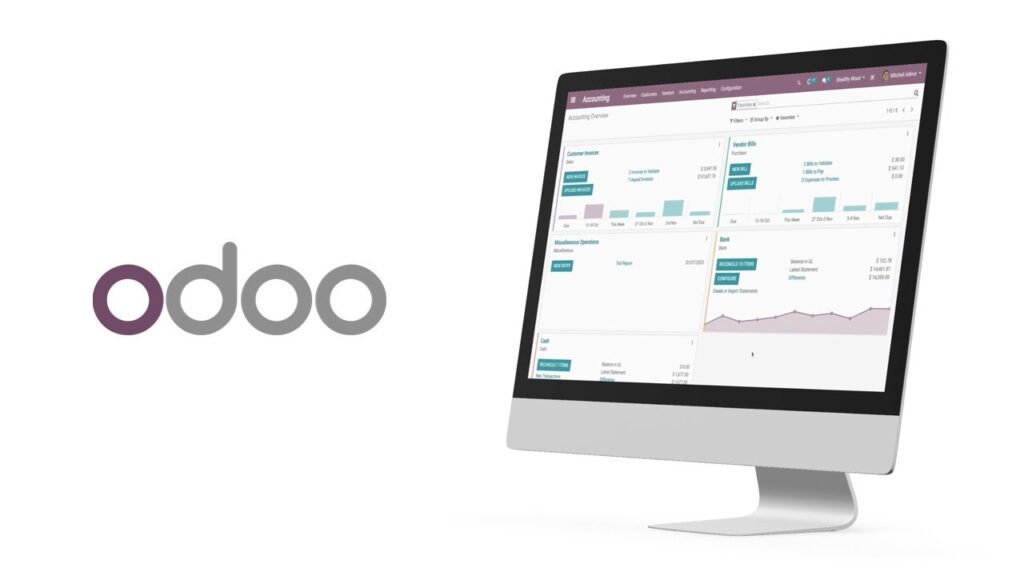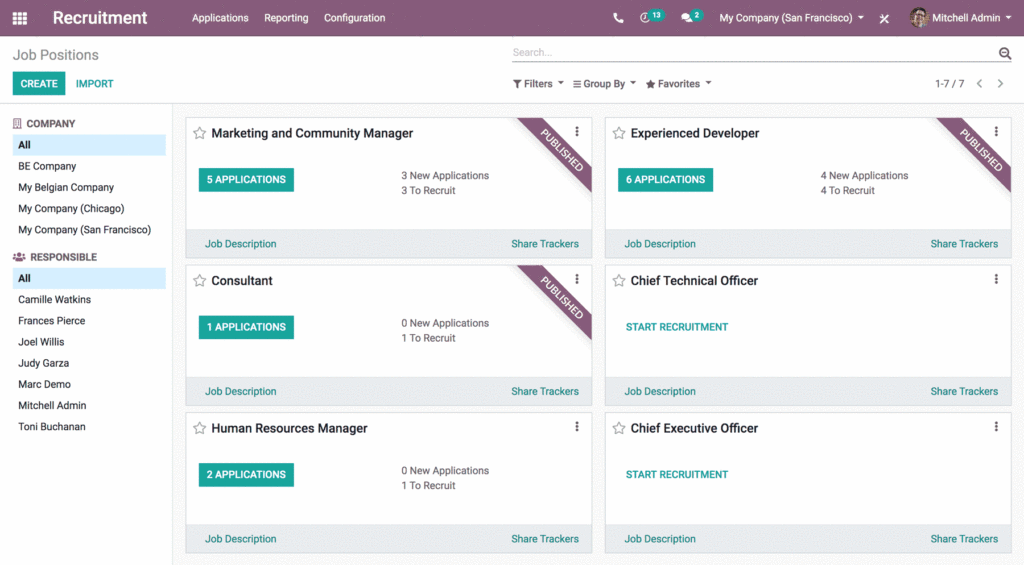Are you looking for an OrangeHRM alternative open-source for business? Well, let’s guide you and ensure your productivity grows.
OrangeHRM is a popular HR software solution, but other options are on the market! It offers a range of features for employee management.
OrangeHRM is a user-friendly, cost-effective HR solution for businesses, especially smaller ones. It helps manage HR tasks and improve workforce management.
Why get an OrangeHRM alternative?
- Customization: OrangeHRM is less customizable than other HRM software solutions. It can be a problem for businesses needing to customize their HRM software to meet their needs.
- Budget Constraints: The cost of implementing and maintaining OrangeHRM, including customization and support, might not align with an organization’s budget.
- Scalability: While OrangeHRM can cater to the needs of both small and large organizations, some businesses might find it lacks certain features or capabilities as they grow and their needs evolve.
- Specific needs: Some businesses might require features unavailable in OrangeHRM, such as sexual harassment recognition training.
- Features: OrangeHRM offers a wide range of features, but some businesses may find that it only offers some of the needed features. For example, OrangeHRM does not provide time tracking or payroll processing features.
5 Best OrangeHRM Alternative Open Source:
BambooHR:
It is a cloud-based human resource management (HRM) software solution for small and medium-sized businesses.
BambooHR is a user-friendly HR software with features like employee data management, time tracking, onboarding, offboarding, performance reviews, and benefits administration.
One can access it from anywhere with an internet connection. BambooHR also offers a mobile app that allows employees to access their HR information on the go.
Some of its features:
- Reporting and analytics: BambooHR provides customizable reporting and analytics tools to gain insights into HR data.
- Employee data management: BambooHR stores and manages employee data, including contact info, job titles, salaries, and benefits.
- Performance management: A performance management system that uses peer feedback, goal tracking, and shorter appraisals to encourage action and eliminate stress.
Pros:
- Intuitive and user-friendly interface, making it easy for HR professionals to use.
- It is cloud-based, so you can access it from anywhere.
- BambooHR is a great way to see HR-related announcements and data in one central place.
Cons:
- Customization options may not be as extensive as other solutions.
- It can be expensive for small businesses.
BambooHR is a cloud-based HRM software that helps businesses of all sizes manage HR operations more efficiently.
HRnest:
HRnest is an online system that helps businesses manage their HR processes, such as absences, schedules, and personal files.
It can help businesses stay up-to-date, plan, make decisions, increase efficiency, and streamline processes.
Its best features:
- Time tracking: HRnest allows you to track employee time and attendance. You can also use HRnest to generate reports on employee time and attendance.
- Customizable workflows: HRnest supports creating custom HR processes and workflows to suit an organization’s unique needs.
- Personal file management: Manage your company’s documentation and create employee lists of resources and competencies.
- Payroll processing: HRnest allows you to process payroll for your employees. You can also use HRnest to generate payroll reports.
Pros:
- Scalable: HRnest can adapt to the needs of growing organizations, ensuring it remains a valuable HR solution over time.
- Ease of use: Easy to use and configure even for beginners.
- Open source: HRnest is an open-source solution, which means it’s free to use and can be customized to meet specific requirements.
Cons:
- Integration challenges: It may require additional development effort for integration with other software or systems.
- Less advanced features: Compared to some proprietary solutions, HRnest may have fewer advanced features for complex HR needs.
HRnest is an affordable, user-friendly software with limited integrations and customization options.
It offers a range of HR features, including attendance management, performance management, and recruitment management.
Odoo ERP:
Odoo ERP is an open-source enterprise resource planning (ERP) software suite that offers a wide range of features to help businesses manage their operations.
It includes modules for CRM, sales, accounting, inventory, manufacturing, project management, and more.
Odoo ERP is a cloud-based or on-premise software solution accessible from anywhere with an internet connection.
Here are some of its features:
- Accounting and finance: The system includes features for bookkeeping, invoicing, and financial reporting, enabling comprehensive financial management.
- Project management: Odoo ERP’s project management module helps businesses manage their projects. It includes task management, time tracking, and project budgeting.
- HR management: Allows businesses to manage employee data, attendance, leave, and performance.
- Inventory management: Odoo assists in tracking inventory levels, managing product information, and optimizing supply chain operations.
Pros:
- Large community: There is a vibrant Odoo community, which means extensive support and numerous add-ons and integrations are available.
- It also has a user-friendly app-store interface for non-developers.
- Comprehensive solution: Odoo ERP provides an all-in-one solution that can replace multiple software tools, reducing the need for complex integrations.
Cons:
- Complexity: The wide array of features and modules can overwhelm some users and significantly smaller organizations.
- Customization effort: Extensive customization might require technical expertise or hiring developers.
Odoo ERP is an excellent open-source ERP solution, but it has a steep learning curve and limited customer support for the Community version.
Organizations looking to consolidate operations, reduce costs, and adapt to unique needs will find this suitable.
Rippling:
Rippling is a cloud-based platform that automates HR, IT, and finance for businesses. It helps manage payroll, benefits, expenses, devices, apps, and more.
It centralizes employee data and automates HR, payroll, benefits, and IT. Also, it simplifies HR and IT processes, improving efficiency and compliance.
Its features include:
- IT Provisioning: Rippling automates the setup of IT resources, including email, software access, and hardware, reducing the time and effort required to prepare for a new employee’s arrival.
- Device management: Rippling is a cloud platform that helps businesses manage devices, from provisioning to tracking usage.
- Reporting and analytics: Offers a range of HR reports that help businesses make data-driven decisions.
- Compliance and security: Rippling helps businesses stay compliant with HR and IT regulations, enhancing safety by managing access to company systems.
Pros:
- It offers a feature-rich payroll and human resources system that can pay employees worldwide.
- Unified HR and IT: The platform combines HR and IT management, eliminating the need for multiple tools or manual coordination.
- It integrates with other HR tools.
Cons:
- Learning curve: The extensive feature set may require some time for users to grasp fully.
- It has limited customization options for some features.
Rippling is a modern and unified HR and IT management platform that simplifies onboarding streamlines HR processes, and enhances security.
Organizations may choose Rippling over OrangeHRM for its efficiency, scalability, and comprehensive approach to HR and IT management.
FreeHR:
FreeHR is a cloud-based HR software solution offering various HR features. They include employee data management, attendance tracking, and performance management.
It is designed to be user-friendly and easy to navigate. FreeHR is available in both a free version and a paid version.
Here are some of FreeHR’s features:
- Employee management: Store and manage employee data, including contact information, job titles, salaries, and performance reviews.
- Time and attendance tracking: Track employee hours worked, vacation time, and other leave requests.
- Payroll processing: Calculate and process employee payroll, including taxes, deductions, and benefits.
- Self-service portal: Employees can view their paystubs, update their personal information, and request time off through the self-service portal.
Pros:
- Cost-effective: Open-source HR software is typically free, making it a budget-friendly option for small and medium-sized businesses.
- Customization: Open-source software can often be customized to suit your organization’s needs.
- Community support: Many open-source projects have active communities that provide support and updates.
Cons:
- It does not include common courses like sexual harassment recognition training, which many states require all employees to take.
- Support: The level of support and documentation can vary, and you might need to rely on community resources.
FreeHR is a robust, easy-to-use HRIS with a range of services. OrangeHRM is a complete HRIS with employee communication, training, and performance management tools.
In closing: OrangeHRM Alternative Open Source.
Choosing the best OrangeHRM alternative open-source software depends on the specific needs. You should compare features, pricing, and specific requirements to find the best HR software solution.
Key features include applicant tracking, onboarding, performance management, and payroll. You should also factor in the cost of the software and any additional fees or add-ons.
Finally, ensure the software meets your specific requirements, such as the number of employees or the type of industry you work in.
Open-source HRM software can streamline your HR operations and contribute to business success. Choose a solution that aligns with your business goals and HR needs.






